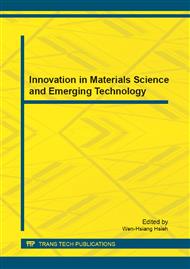p.292
p.297
p.304
p.309
p.314
p.320
p.325
p.330
p.334
A Prediction Model for Phytoplankton Abundance Based on Relevance Vector Machine
Abstract:
Freshwater algal bloom is caused by rapid increases or accumulations of phytoplankton abundance due to the excess of nutrients in eutrophic lakes or reservoirs. The population dynamics in such ecosystem is difficult to explain and predict due to the high non-linearity of the relationship between phytoplankton abundance and water variables. Thus the capacity of model is a crucial point for system simulation and information abstraction about the target ecosystem. Recently relevance vector machine (RVM) has been reported to be able to work more effectively with simpler algorithm, faster convergence and better accuracy than other prediction approaches, such as artificial neural network (ANN). This work for the first time adopts the RVM to develop a prediction model for phytoplankton abundance given ten water parameters including temperature, turbidity, conductivity, nitrate, total nitrogen (TN), orthophosphate (PO43-), total phosphorus (TP), TN/TP, hydraulic retention time (HRT) and water level in Macau Reservoir. The measured data are used to test and validate the model for predicting the phytoplankton abundance. The preliminary results show that the RVM based model is feasible in understanding the algal bloom problem and simulating the onset of algal bloom caused by phytoplankton abundance, thus providing a useful guide for practical algal bloom control.
Info:
Periodical:
Pages:
314-319
Citation:
Online since:
December 2011
Authors:
Price:
Сopyright:
© 2012 Trans Tech Publications Ltd. All Rights Reserved
Share:
Citation:


